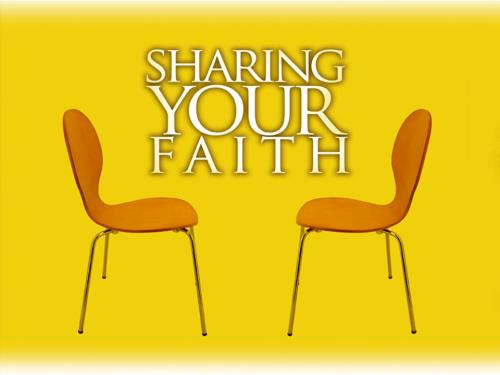-
That Pesky Catholic "Et" Series
Contributed by W Pat Cunningham on Nov 28, 2017 (message contributor)
Summary: Christ taught us the basic belief of Christianity, that God is One and God is three. The God we believe in, the God who loves us so much, is Trinity–Father, Son and Holy Spirit. (Ghost)
Trinity Sunday 2017
That Pesky Catholic “Et”
A wise theologian once taught me that the distinctive character of Catholic teaching is what he called the “pesky Catholic ‘et’.” That’s the word “and” in English, “y” en Español, “und” auf deutsch. Catholic teaching uses a lot of phrases containing the words “both” and “and.” That just echoes the binary world of nature, of course. Creatures are both animate and inanimate. Animate creatures are plants and animals. We look up and down. Our bodies have right and left lungs and arms and legs. Humans are made of body and soul, our moral lives face choices both evil and good. Our marital relationship has two ends: the mutual growth of the spouses and the procreation of children. And when God fulfilled His promises to us, He gave us a person both human and divine, our Lord Jesus Christ. During his life on earth, He showed us both his human and divine natures. And he taught us the basic belief of Christianity, that God is One and God is three. The God we believe in, the God who loves us so much, is Trinity–Father, Son and Holy Spirit. (Ghost)
The Church, born from the Paschal Mystery when the Spirit came upon Mary and the Apostles at Pentecost, has had from that moment two millennia of consolation and challenge, peace and conflict. It’s instructive to learn that all the great heresies that have tried to tear apart the Body of Christ have been and continued to be denials of the pesky Catholic “et.” Arians and Muslims affirmed that Christ was human, but denied His divinity. On the other end of the spectrum, Monophysites and Gnostics bought into the idea that Christ was divine, but denied His full humanity. In the moral sphere, the Pelagians looked at the work of God, grace, and the good work of humans and denied that humans needed grace for salvation. On the other side, the Protestant revolutionaries signaled their revolt with three firm denials of the Catholic “et.” Their cry was and is “sola fide, sola Scriptura, sola gratia.” That rejection of the Catholic “et” has given us thirty or forty thousand Protestant denominations, each based on a set of protests against the “both. . .and” of Catholic teachings.
The Blessed Trinity: three persons but only one God. Now let me be brutally honest, St. Augustine wrote De Trinitate in fifteen books. His last book tells us that God is incomprehensible, but ever to be sought. That’s a great word: the mystery of the Trinity is incomprehensible. We can’t grasp it, we cannot get our arms around it fully. We can, however, understand it. We can stand beneath the wondrous mystery of divine being and gaze in awe, and know what God is not, but we can never truly “get” what God truly is. St. Thomas Aquinas wrote in his Summa Theologica forty-three discussions of the nature and persons of God. But in the end he knew more about what he didn’t know than what he did. So whatever this poor preacher says about the Blessed Trinity doesn’t even scratch the surface. Let’s look at God by analogy.
When I speak a word about myself, it exists, but it is imperfect, transient. When the Father speaks the Word of self-knowledge, it is a perfect word. It is a perfect expression of Himself, and so this Word is God, as St. John taught us. The Father, perfect in will, loves the Son, and the Son loves the Father. The Love they bear for each other is perfect. That perfect love is then a divine person, distinct from Father and Son but one with the Father and the Son. That perfect Love has overflowed in creative power to make the universe. The perfect communion of the Blessed Trinity overflows into humanity, and creates man and woman who imitate the Trinity by loving each other unconditionally and, like the Trinity, bear abundant fruit, their children. The human family then is an image–albeit imperfect–of the divine Family, the Blessed Trinity.
That’s what you might call a “top-down” look at the Blessed Trinity. Why is it not so appealing to secular humans, or non-Christians? Let’s go back to the beginning, literally the beginning of time. How did early humans learn about God after the Fall? Early civilizations grew in a scary world. Their science was primitive. They did not understand plate tectonics, weather patterns of pressure and temperature and humidity or much of anything we’ve learned since the sixteenth century. If an earthquake brought down their structures and killed their children, they knew some horrible power wrought the destruction. They imagined some god was angry with them, so they offered sacrifice and after a few smaller quakes, the trouble passed. If a huge storm blew a tree over on their home, they sought to placate the storm god, and the sky eventually cleared. If a passing army killed their people and burned their town, somehow they had to get the god of war on their side. Fear ruled religion, and all the gods were scary dudes. And, as St. Paul reminded the Romans, they were not gods at all, but demons and natural forces.

 Sermon Central
Sermon Central



